|
Wyatt Earp
Answer
to Name
This Famous Person Game - March 2014
by Mike McLeod
|
 |
The famous lawman Wyatt Earp was identified by: Sherry Blanton, Julie Kimbrell of the Old School Antique Mall in Sylva, N.C. (who has been to Tombstone too many times not to recognize him, she says); Ted Carlton of Utah; Jane Ficht of Big Canoe, Ga.; Scott and Carolyn Brown of Memories Flea An'Tique Mall in Prattville, Ala.; Larry Lunsford of Auburn, Ala.; and Sherron Lawson of Roswell, Ga. (who also guessed Carl Sandburg correctly last monthly but was accidentally unheralded).
History has a love-hate relationship with Wyatt Earp. Or I should say, historians, reporters, and the people of his day had/have a love-hate relationship with Wyatt Earp. He seemed to be a polarizing figure, and his life was proof that the Wild West earned that title.
|
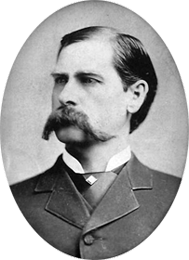
Wyatt Earp was 33 years
old at the O.K. Corral.
|
Before becoming a lawman, Wyatt Earp had his own run-ins with the law. As a young man, he was once arrested for stealing a horse, and he escaped from jail to avoid prosecution. He had other brushes with the law, but this did not stop him from eventually pinning on a badge, mostly thanks to his older brother Virgil who was already an officer of the law. It was actually Virgil who sometimes got Wyatt jobs as a deputy, and it was Virgil—not Wyatt—who was the leader of the Earps and Doc Holliday at the gunfight at the O.K. Corral.1
As a lawman, Wyatt Earp was seemingly fearless and calm in life-threatening situations. In one instance, he stood up against a lynch mob and saved a man who was accused of murder, Curly Bill Brocius, from being hung. In a strange turn of events, Earp shot Curly Bill dead some time later for being an accessory in the murder of his brother Morgan.
The event that made Wyatt Earp famous, the gunfight at the O.K. Corral in Tombstone, Arizona Territory, did not exactly happen as it was portrayed in the movies. The run-up to this involved run-ins with Ike Clanton, a so-called cattle rancher who was actually a cattle rustler. The Earps had trouble with Clanton who bought stolen cattle from a gang of outlaws known as the Cowboys who, in their spare time, robbed people and held up stagecoaches which were usually carrying huge silver shipments. Tombstone was a silver-mining boom town.
On Oct. 26, 1881, after a night of drinking, Ike Clanton spent most of the day threatening to kill the Earps and Doc Holliday. Virgil found him in the street, and approaching him from the rear, “buffaloed” him—that is, pistol whipped him. Ike was hit in the head and knocked down. Disarming him, Virgil took him to the judge who fined Clanton for breaking Tombstone’s law against carrying guns in town. Clanton paid the fine and then left to meet up with his brother Billy and Cowboys Frank and Tom McLaury and Billy Claiborne. The gang met six lots down from the O.K. Corral. (The gunfight at the O.K. Corral did not really happen at the O.K. Corral. I told you the movie was not exactly correct.) There, Ike continued to threaten to kill the Earps and Holliday.
Virgil got wind of this meeting and rounded up his brothers Wyatt and Morgan and their friend Doc Holliday. Virgil handed Doc a double-barrel shotgun which he hid under his coat so as to not disturb the townspeople. The four headed for the famous shootout and their place in history.
|
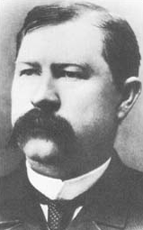
|
Virgil Earp died at the age of 62 in 1905 in Nevada after suffering from pneumonia.
|
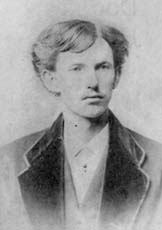
|
John Henry “Doc” Holliday’s graduation photo from the Philadelphia School of Dental Surgery in 1872 when he was 20. Born in Griffin, Ga., he was a cousin by marriage to Margaret Mitchell, author of Gone With The Wind. He died at 36 in 1887 in Colorado from the effects of tuberculosis.
|
|

|

|

|

|
|
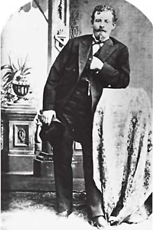
|
Ike Clanton circa 1881, the year of the O.K. Corral. He was shot dead for cattle rustling in 1887.
|
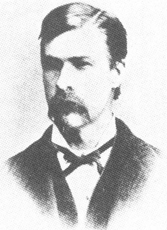
|
Morgan Earp died at the
age of 30 in Tombstone.
|
|

|

|

|

|
|
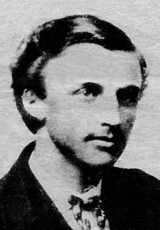
|
Billy Claiborne escaped unscathed from the O.K. Corral because he was unarmed. He died at the age of 22 in 1882 when he, while drunk, called out a gunfighter named “Buckskin” Frank Leslie who shot him once in the chest.
|
|
|
The two groups of men faced each other at extremely close range, between six feet and ten feet apart. They did not stand shoulder to shoulder. Ike and Billy Claiborne were in the middle of the lot, and the rest of the Cowboys were behind them; two stood by their horses. The Earps and Holliday were spread out behind Virgil and to his right. At this point, Virgil ordered the Cowboys to throw up their hands and give up their guns. They did neither.
Who shot first is a matter of discussion. Some say Wyatt; others say Billy Clanton. When the shooting started, Claiborne (who later said he was unarmed2) took off running. Somehow, Ike Clanton got to Wyatt and told him he was unarmed; Wyatt let him go, and Clanton escaped unharmed. After about half a minute and 30 shots being fired, Tom McLaury was down, hit by a blast by Doc Holliday’s shotgun. He soon died. Frank McLaury was shot in the stomach, and as he moved down the street while still firing at the Earps, he was shot under the right ear. He died almost immediately. Billy Clanton was shot three times: near his right wrist, on the left of his chest and in the stomach. He also died.
Virgil was shot in the calf. Morgan was grazed across his shoulder blades, and Holliday was grazed across the hip. Wyatt was unharmed.
Ike Clanton, who had breathed out death threats for a day, continued to run and got away safely. The next day, he brought charges of murder again the Earps and Holliday, but those charges were dismissed, as Virgil had deputized his men, and the Cowboys should have surrendered their weapons.
But this was not the end of the story. About two months later, Virgil was ambushed in town and shot in the left elbow which incapacitated his arm for the rest of his life. While playing pool, Morgan Earp was killed by a shot through a window that hit him in the back. Although Ike Clanton’s hat was found in the vicinity, no charges were brought against him or anyone else.
Between mid-March and mid-April 1882, Wyatt Earp as a Deputy U.S. Marshal went on what has been called the “Earp Vendetta Ride.” With arrest warrants in hand, he and a posse tracked down and killed at least four men he believed were involved in the ambushes of his brothers. One was Curly Bill Brocius, the man Wyatt had once saved from a lynch mob.
After the ride, the Earps left Tombstone. What drew Wyatt to Tombstone in the first place was a huge silver strike there, the largest in Arizona. After leaving, he traveled around the West with his common-law wife Josephine Sarah Marcus, whom he later married, seeking his fortune in other boom towns in Arizona, Nevada, Idaho, California, and Alaska during the gold rush. He owned or ran saloons, was a Faro dealer, gambler, miner, real estate speculator in San Diego, a boxing referee and also a lawman from time to time. In Hollywood, he worked as a consultant on some early cowboy movies and was friends with Tom Mix and William S. Hart.
In his early days, another famous lawman was also his friend—Bat Masterson.
Wyatt Earp lived to the age of 80. Born on Mar. 19, 1848 in Monmouth, Ill., he died on Jan. 13, 1929 in Los Angeles, Calif.
--------------------------
1From www.tombstonechamber.com: "The term ‘O.K.,’ used to name Tombstone, Arizona's historic O.K. Corral, had its origins in the Pennsylvania Dutch country of New York State. During the 1836 presidential campaign, candidate Martin Van Buren was supported by a political club in his hometown of Kinderhook originally called the ‘Oll Korrect’ club. The name was later changed to ‘Old Kinderhook,’ and then was shortened to ‘O.K.’; Van Buren was an O.K. club member. The term eventually came into general use and was thus chosen by John Montgomery to describe his O.K. Corral, livery and feed stable which he founded in Tombstone, Az., in February of 1879.”
2 A handwritten transcript of Billy Claiborne’s testimony at a coroner’s inquest after the gunfight was found in 2010 in Bisbee, Az. (south of Tombstone). In it, he stated he was unarmed. UK Guardian, “Gunfight at OK Corral document found in jail storage room,” April 22, 2010.
Learn
about more Famous People
|